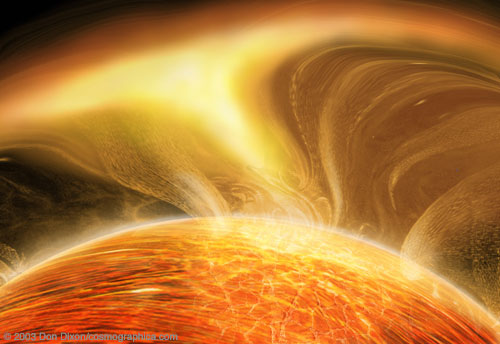|
Supernova Fallback Accretion onto Magnetars
Magnetars are neutron stars with magnetic fields thousands of times stronger than typical neutron stars. Although we only know of around 20 magnetars in our Galaxy, this low number is due to the fact that they spin down quickly from dipole radiation. It is estimated that as many as 1 in 10 neutron stars are in fact magnetars. In our research we considered what would happen if a magnetar was born within a 25 to 40 solar mass star. Such stars are expected to give rise to black holes when the envelope collapses. But if a quickly spinning magnetar is present, we find a number of new interesting things occur. In particular, if the magnetar is spinning rapidly enough, its magnetophere acts like an egg beater, expelling the infalling material. Since this material carries away energy and angular momentum, it has a number of interesting consequences, including affecting gravitational wave production, determining whether a magnetar or black hole forms, and the expelled material collides with supernova ejecta, producing a luminous, propeller-powered supernova. Our first results relied on simple models, which would benefit from a detailed treatment. In the future we plan to model the lightcurves and spectra of the propeller-powered supernovae with more sophisticated models. Next, it is important to assess the gravitational wave signal for LIGO. When the fallback rate is high, the magnetar accretes for around 100 seconds before collapsing to a black hole. Such a process may be detectable as high frequency gravitational waves, providing a probe deep into the supernova ejecta. But the details of the signal depend on the competition between the accretion spinning up the magnetar and gravitational waves spinning it down, which we plan to study. Related Links: Detailed primer on magnetars "Supernova Fallback onto Magnetars and Propeller-powered Supernovae," A. L. Piro & C. D. Ott, 2011, Ap. J., 736, 108 |
